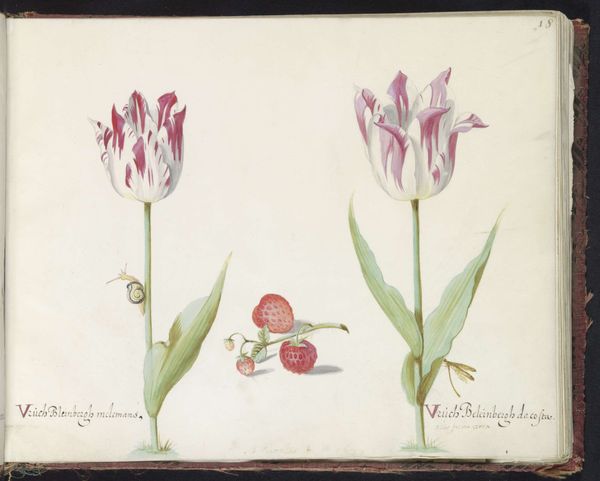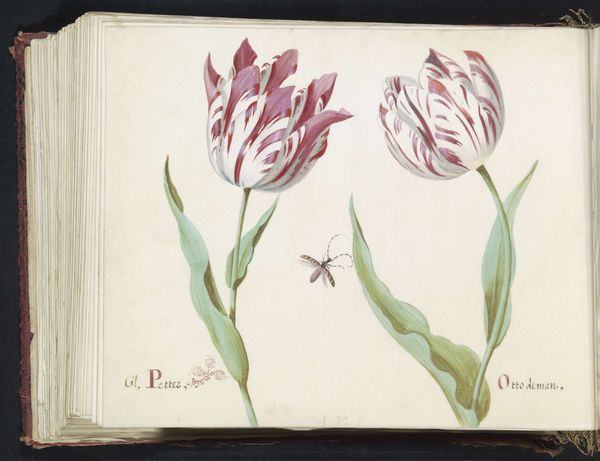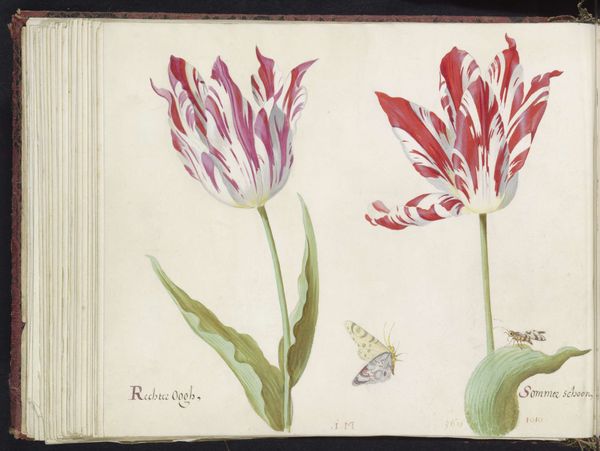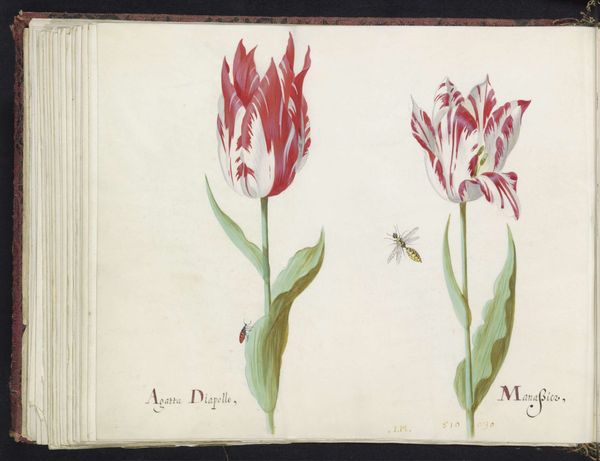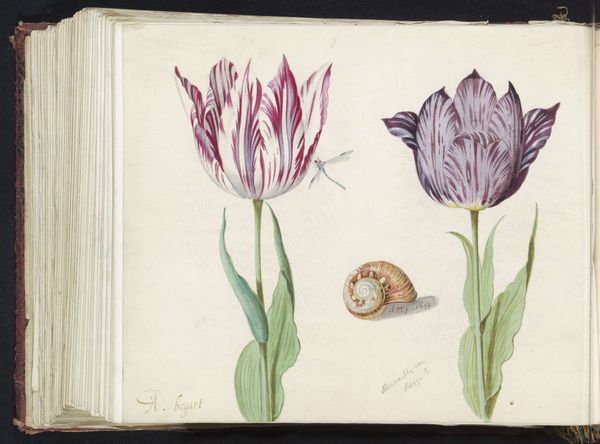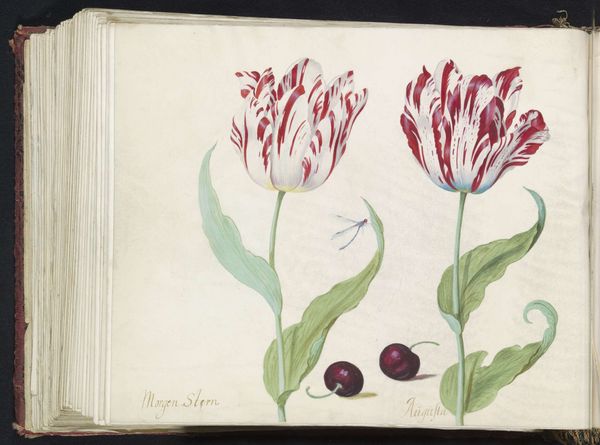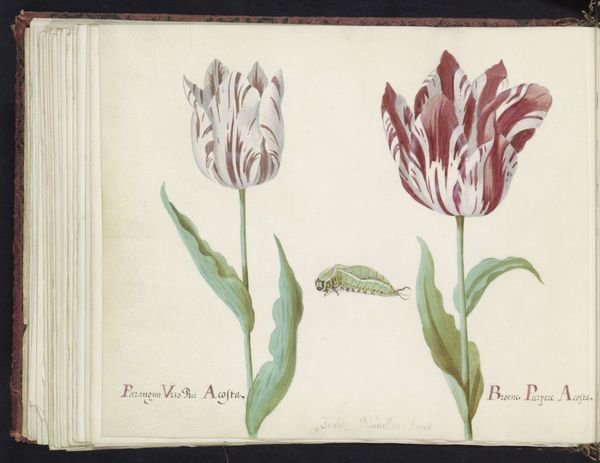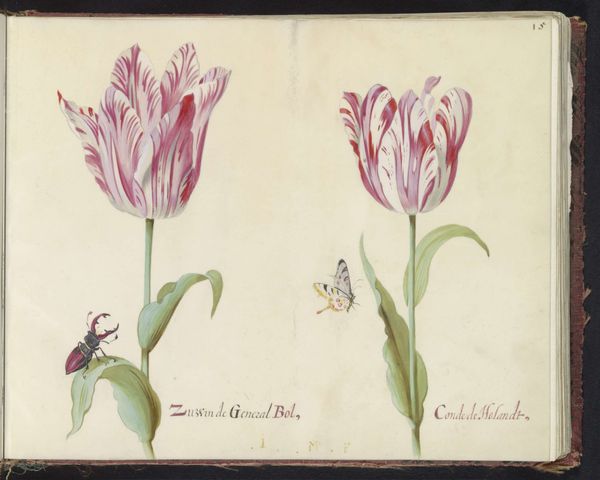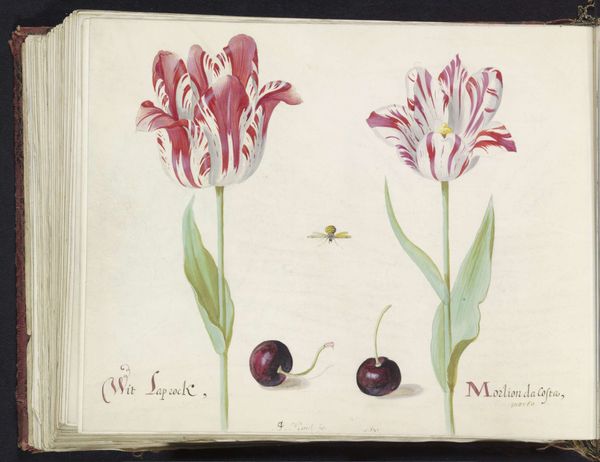
painting, watercolor
#
water colours
#
dutch-golden-age
#
painting
#
watercolor
#
coloured pencil
#
botanical art
Dimensions: height 265 mm, width 335 mm
Copyright: Rijks Museum: Open Domain
Curator: It’s a fairly light and airy piece, wouldn’t you say? Almost fragile. Editor: Yes, there’s a delicacy here. We’re looking at “Twee tulpen met twee kersen en vlieg,” or “Two Tulips with Two Cherries and a Fly” by Jacob Marrel, painted around 1637. The materials used appear to be watercolor and colored pencil. It’s currently held in the collection of the Rijksmuseum. Curator: My initial impression is one of observing early botanical documentation, almost scientific in its exactitude. The stark white background pushes the specimens forward. I find myself curious about Marrel's process here, the layering of colour, and whether these were painted from life, or from dried specimens. Editor: Absolutely. These images hold much significance when you consider tulip mania during the Dutch Golden Age. The tulip itself had become a symbol of status and wealth. Curator: Exactly! It provokes thoughts about consumption. The seemingly simple choice of rendering in watercolor—readily available but delicate—becomes fascinating when contextualized within this booming economy of status and the availability of resources. I'm curious about the labor involved in cultivating these flowers and producing the art itself. Editor: The fly adds a touch of vanitas, a subtle reminder of the fleeting nature of beauty and wealth, which feels so very potent, given the period's infatuation with such beautiful flora. Curator: Indeed. And that pairing of the tulip with cherries further complicates it. Two distinct markers of the seasons are represented together. Editor: Yes, the composition makes me wonder if the intent was solely about representing these individual items. The choices behind inclusion create new relationships with symbolism. Curator: So, from an analysis rooted in the work and materials to layers of iconographic implication… What have we found here, beyond botanical study? Editor: Perhaps that within art's presentation lies much greater meaning, both tangible and abstract, just beneath the surface.
Comments
No comments
Be the first to comment and join the conversation on the ultimate creative platform.
